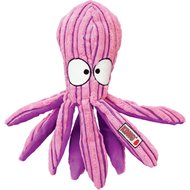Is the giant man eating octopus a real thing?
The Giant North Pacific octopus is the largest octopus in the world. This giant cephalopod lives along the coastlines of the North Pacific Ocean.
The octopus is a red/brown color and has a giant head, mantle, and arms. It can change color against coral rocks or plants to disguise itself! It is usually distinguished immediately by its giant size. The octopus on average weighs around 30-35 pounds and the tentacles reach 14 feet!
However, get this- The Guinness book of world records holds one at 300lbs and it had an arm span of 32ft. Even though this Octopus is a giant it can fit through openings as large as its beak. This octopus could take down a boat. This makes the below story even more credible. Just be careful where you dip your toes.
Was giant octopus caught off Tasmanian coast a man-eater?
A man is swept out to to sea while fishing for crayfish off the rocks along the rugged, and extremely treacherous, west coast of Tasmania. Despite a number of searches by experienced locals, the man's body is never recovered. Just over 12 months later, two fishermen make a startling discovery after hauling to shore a...
The North Pacific Octopus is carnivorous which means it eats the meat or flesh of the creatures around it. They live for around three to five years.
The giant Pacific octopus has blue blood that helps it obtain oxygen in cold water. If it is injured it looks like there is ink in the water.
The octopus is extremely smart. In captivity, they have been known to recognize different people, play with the toys they receive, and complete puzzles and tasks.
The giant octopus is found in the Pacific Ocean off the coasts of Alaska, Washington, Oregon, California, Russia, Japan, Korea, and British Columbia.
It enjoys cool water and can be found at the surface level to 6600 ft.

The Giant Octopus enjoys a variety of depths
What do they eat?
They prefer to hunt at night. It will eat anything that it can...
which includes fish, sharks, clams, other octopus, and more.
Watch out, divers.
There are even tales of the man-eating octopus with underwater caves full of bones...
The octopus grabs its food using its tentacles and suckers, then bites it and tears away flesh with its tough beak.
Mating
The Giant Octopus only breeds one time. Both the male and female die soon after breeding. The male stops eating and he spends time passively floating in areas where predators can eat him easily.
The female stops hunting to lay her eggs. She will take care of them by blowing fresh water over them and she keeps them from harm. They take about six months to hatch and then she soon dies also.

Giant Pacific octopus or North Pacific giant octopus
Most of the eggs will hatch but the survival rate is dependant on the environment.
The giant Pacific octopus is not currently protected by the Convention on International Trade in Endangered Species of Wild Fauna and Flora.
At this point, they are too hard to track and assess. While not endangered, the species is likely threatened.
The giant Pacific octopuses are eaten by sharks, whales, sea otters, humans, and other preditors.
Fortunately, the octopus flees to warm water and dead zones in favor of cooler and oxygenated waters.
The populations must try to avoid low-oxygen zones.
Yet, the species can adapt to live in deep water. It is possible for the giant Pacific octopus to find a new habitat.
Could the man-eating octopus be a real thing? What do you think? If conditions were unfavorable and the octopus hungry, could it venture out to humans just for survival?
The creepy stories of skeleton caves and human remain found in stomachs is enough to use a little caution when diving in unknown areas.


This was a fascinating article. My husband read it first, and came to me to ask if I’ve read it yet because he enjoyed it so much. Thanks once again for another great article!
ReplyDeleteSo glad you enjoyed it! Thank you for commenting.
Delete